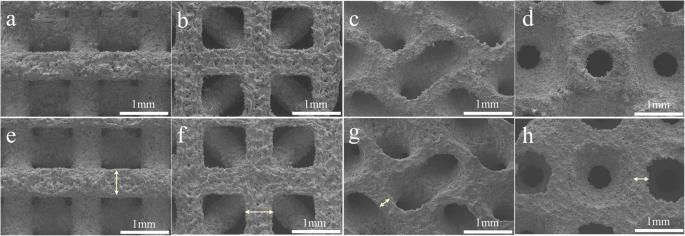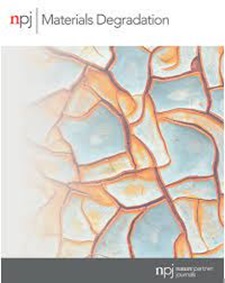The effect of topological design on the degradation behavior of additively manufactured porous zinc alloy
IF 6.6
2区 材料科学
Q1 MATERIALS SCIENCE, MULTIDISCIPLINARY
引用次数: 0
Abstract
The advent of additively manufactured biodegradable porous metals presents a transformative opportunity to meet the criteria of ideal bone substitutes. Precisely tailoring their degradation behavior constitutes a pivotal aspect of this endeavor. In this study, we investigated the effects of topological designs on the degradation profile of laser powder bed fusion (LPBF) Zn scaffolds under dynamic in vitro immersion tests. Specifically, four types of Zn-0.4Mn-0.2Mg scaffolds (beam-based: diamond, face center cubic; surface-based: gyroid, schwarz-P) were designed and fabricated. The degradation mechanism of the scaffolds was comprehensively evaluated using both experimental and simulation methods. The results illuminate the profound impact of structural design on the degradation properties of the Zn alloy scaffolds. The beam-based diamond and face center cubic scaffolds exhibited a degradation rate of 0.08–0.12 mm per year with a relatively uniform degradation mode under dynamic immersion. On the contrary, the surface-based gyroid and Schwarz-P scaffolds demonstrated a notably reduced degradation rate due to lower permeability. This restricted the diffusion of medium ions within the pores, culminating in the accumulation of degradation products and more severe localized degradation. This study underscores the potential of topological design as a compelling strategy for tailoring the degradation profile of additively manufactured biodegradable scaffolds, thereby advancing their suitability as bone substitutes.

拓扑设计对添加剂制造的多孔锌合金降解行为的影响
添加剂制造的可生物降解多孔金属的出现,为满足理想骨替代品的标准提供了一个变革性的机会。精确定制其降解行为是这一努力的关键环节。在本研究中,我们研究了拓扑设计对激光粉末床融合(LPBF)锌支架在动态体外浸泡试验下降解曲线的影响。具体而言,我们设计并制造了四种类型的 Zn-0.4Mn-0.2Mg 支架(束基:菱形、面心立方;面基:陀螺形、施瓦茨-P)。利用实验和模拟方法全面评估了支架的降解机制。结果表明,结构设计对锌合金支架的降解性能有着深远的影响。在动态浸泡条件下,梁基菱形和面心立方支架的降解速率为每年 0.08-0.12 毫米,降解模式相对均匀。相反,基于表面的陀螺和 Schwarz-P 支架由于渗透性较低,降解率明显降低。这限制了孔内介质离子的扩散,最终导致降解产物的积累和更严重的局部降解。这项研究强调了拓扑设计作为一种令人信服的策略的潜力,可用于定制加成制造的生物可降解支架的降解曲线,从而提高其作为骨替代品的适用性。
本文章由计算机程序翻译,如有差异,请以英文原文为准。
求助全文
约1分钟内获得全文
求助全文
来源期刊

npj Materials Degradation
MATERIALS SCIENCE, MULTIDISCIPLINARY-
CiteScore
7.80
自引率
7.80%
发文量
86
审稿时长
6 weeks
期刊介绍:
npj Materials Degradation considers basic and applied research that explores all aspects of the degradation of metallic and non-metallic materials. The journal broadly defines ‘materials degradation’ as a reduction in the ability of a material to perform its task in-service as a result of environmental exposure.
The journal covers a broad range of topics including but not limited to:
-Degradation of metals, glasses, minerals, polymers, ceramics, cements and composites in natural and engineered environments, as a result of various stimuli
-Computational and experimental studies of degradation mechanisms and kinetics
-Characterization of degradation by traditional and emerging techniques
-New approaches and technologies for enhancing resistance to degradation
-Inspection and monitoring techniques for materials in-service, such as sensing technologies
 求助内容:
求助内容: 应助结果提醒方式:
应助结果提醒方式:


